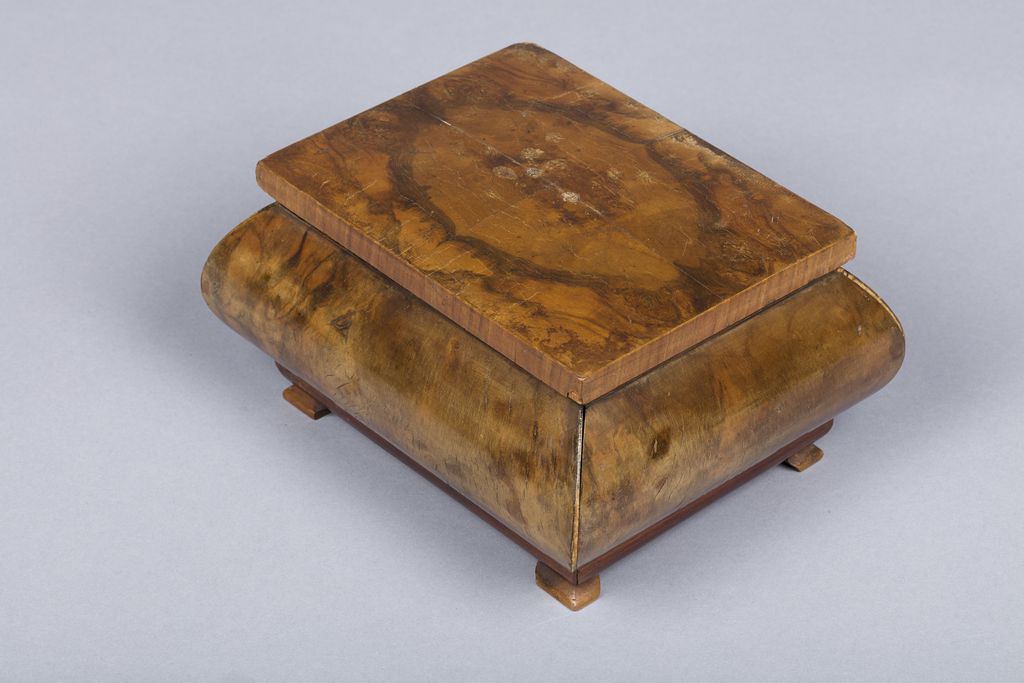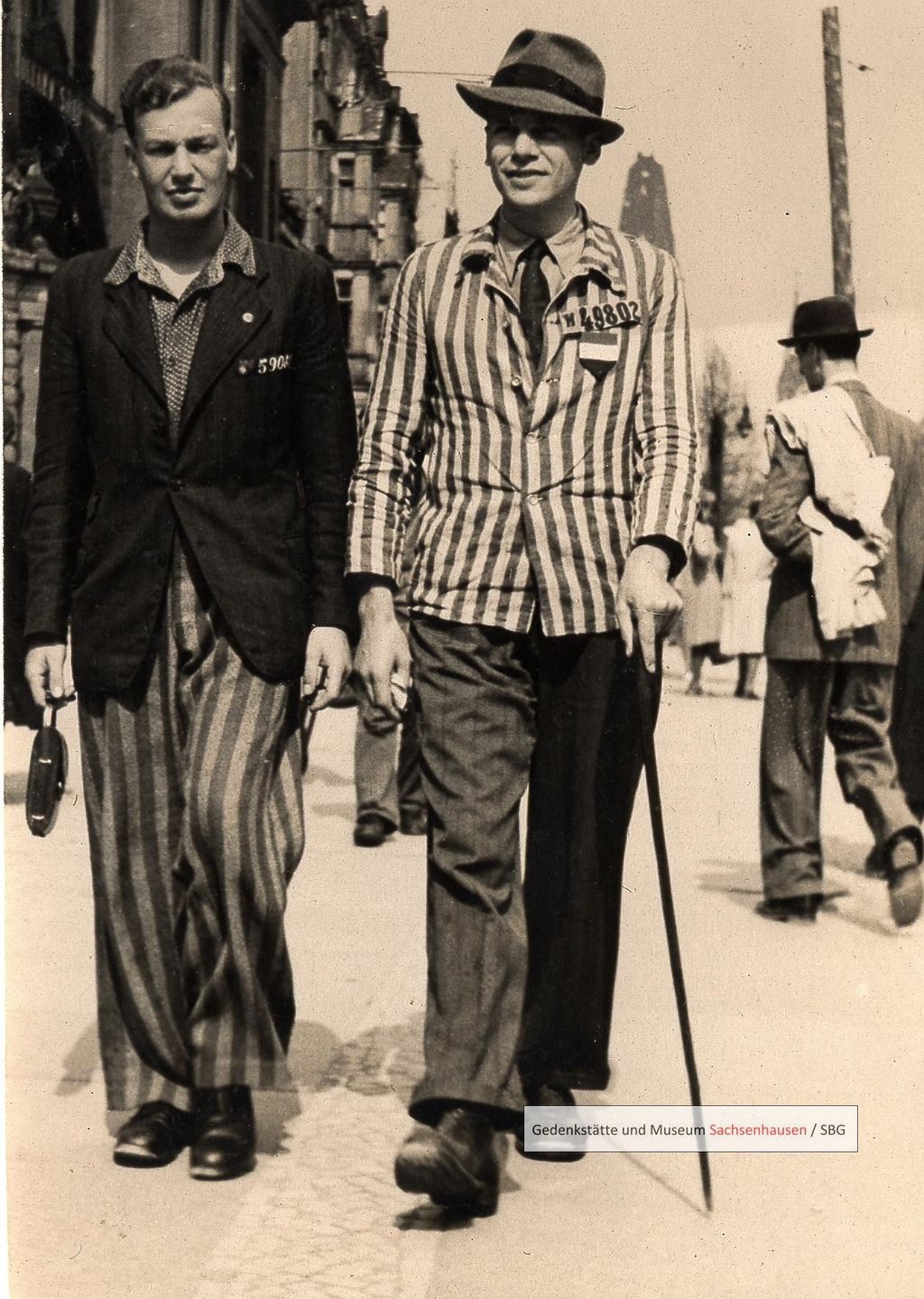A Lost Teddy Bear
Janina Krawczyk discovered this little teddy bear by the wayside near Eberswalde, after the death march. She took the teddy bear with her to Warsaw – as a reminder of her liberation and the end of her imprisonment in a concentration camp in Germany.
Wooden Suitcase from the Special Camp
A special suitcase, made from wood in the Soviet special camp Sachsenhausen. Reinhard Wolff built it himself during his imprisonment there.
Czech Students in Sachsenhausen Concentration Camp
On the night of November 20, 1939, the Gestapo deported 1,140 students from Prague and other Czech cities to Sachsenhausen concentration camp. One of the students arrested was 21-year-old Ladislav Bém [Böhm].
Prisoner Numbers for Father and Son
96541 and 96542 are the prisoner numbers of Ryszard Zabłotniak (born 1928) and his father Józef Zabłotniak (born 1898). Both were arrested in 1944 after the suppression of the Warsaw Uprising and deported to Sachsenhausen concentration camp.
Guest Gift for the Anniversary of the Liberation
This gift was presented to Sachsenhausen Memorial on the 55th anniversary of the liberation in April 2000 by Arschaluis Zatinjan, a former Soviet prisoner of Sachsenhausen concentration camp.
Handmade Prayer Book
This small, 10.6 x 7.6 cm booklet is a handmade prayer book. Zofia Sukow made it during her imprisonment in the subcamp of Dreilinden Maschinenbau GmbH in Kleinmachnow.
Bark Grater from the Below Forest
During excavations in the Below Forest in the 1990s, numerous bark grater like this one were found. What is the story behind them?
Embroidered Heart
The fabric heart was made in the Soviet special camp Sachsenhausen in 1947. Leonore Fink made it to surprise her mother, also imprisoned, for St. Nicholas Day.
A Life-Threatening Message
Only a few inmates exposed themselves to the danger of secretly smuggling messages out of the concentration camp. This was only possible with the support of outsiders.
Responsible: Ernst Schneller, Berlin
The agitation material of the Communist Party of Germany (KPD) from the early 1930s is linked via a detail to an important inmate of Sachsenhausen concentration camp.
A Genuine Forgery
This banknote is an almost perfect counterfeit, created in a specially equipped printing plant behind the walls of Sachsenhausen concentration camp.
“I greet you from afar!”
Frieda Trabitz, married name Drews, received this piece of embroidery as a birthday present from a fellow prisoner in Soviet special camp Sachsenhausen in 1949.
A Special Christmas Gift
This ring weighs just 5 grams, but one can hardly imagine how much it must have weighed in the pocket of the prisoner who secretly made it.
A Secret Message
Rudolf Witzleben wrote this letter, a secret message, from the Soviet special camp in Weesow am to his family in Berlin-Charlottenburg on August 6, 1945.
A Stroll Down Kudamm
At the end of June 1945, the Dutchman Arnold Blitz (right) and his friend Tony Mast are photographed in their prisoner clothing on Kurfürstendamm during an excursion to Berlin.
Prisoner’s Jacket of an Unknown Person
The memorial received this prisoner’s jacket as a gift from Eckhard Zowe from Beetz, a district of Kremmen. The jacket was left behind by a prisoner at the end of April 1945 on the farm of the Zowe family.
Easter Greetings from the Concentration Camp
Louis Kiebooms sent this Easter greeting to his wife and four children in April 1944. In the background you can see the city silhouette of Antwerp. Kiebooms’ letters from the camp were often decorated with drawings.
Miniature Card Game
The miniature card game is a cardboard skat deck made in the concentration camp. It consists of eight cards each with the symbols cross, spade, heart and diamonds drawn in pencil.
Wooden Cigarette Case
This technically elaborate and artistically decorated case with the carved depiction of a man behind bars, identified as a concentration camp inmate by his cap and prisoner number, is the work of an unknown inmate.



















